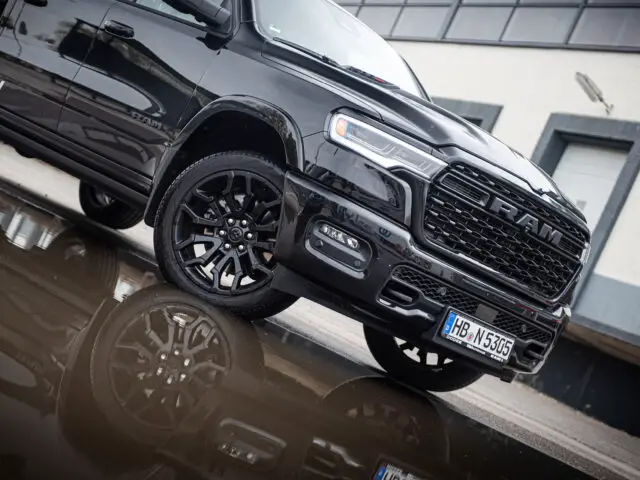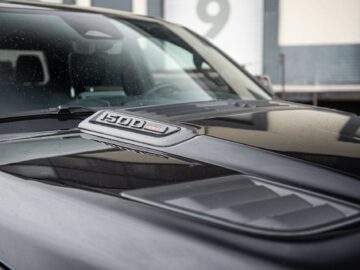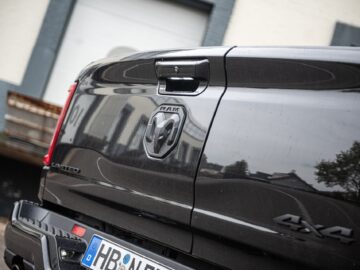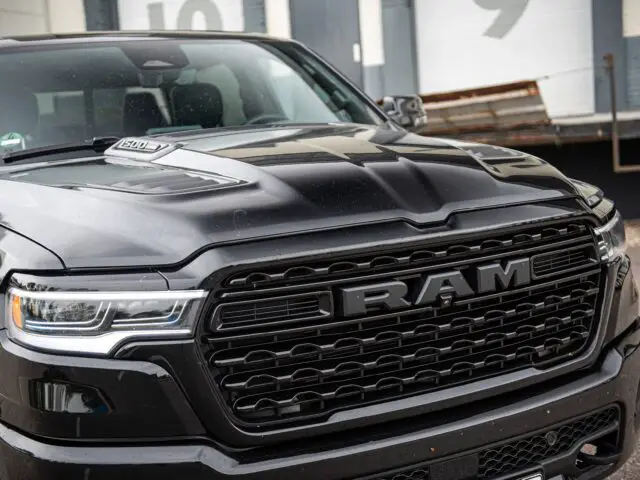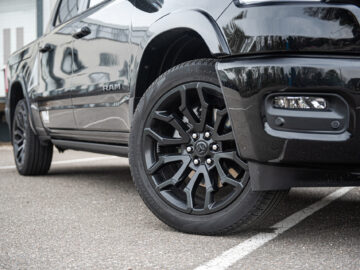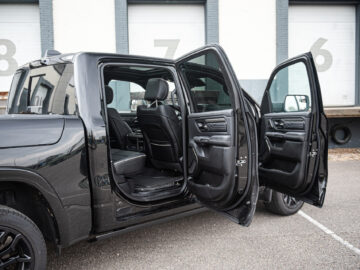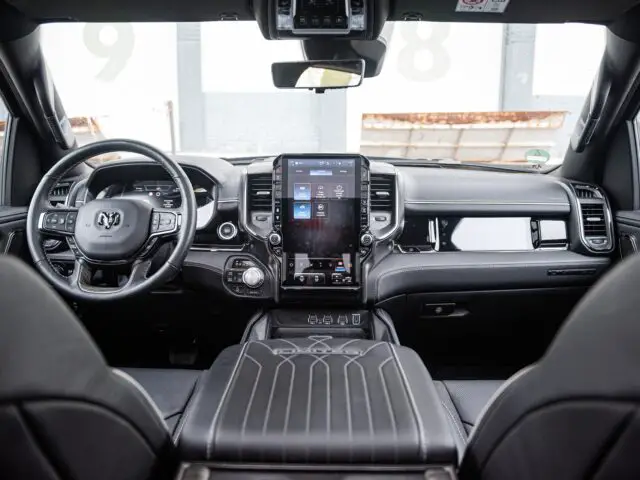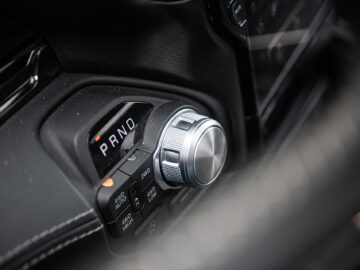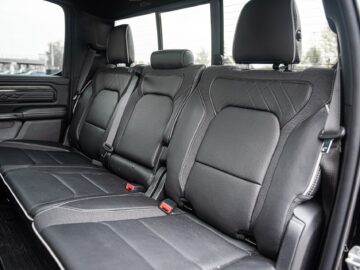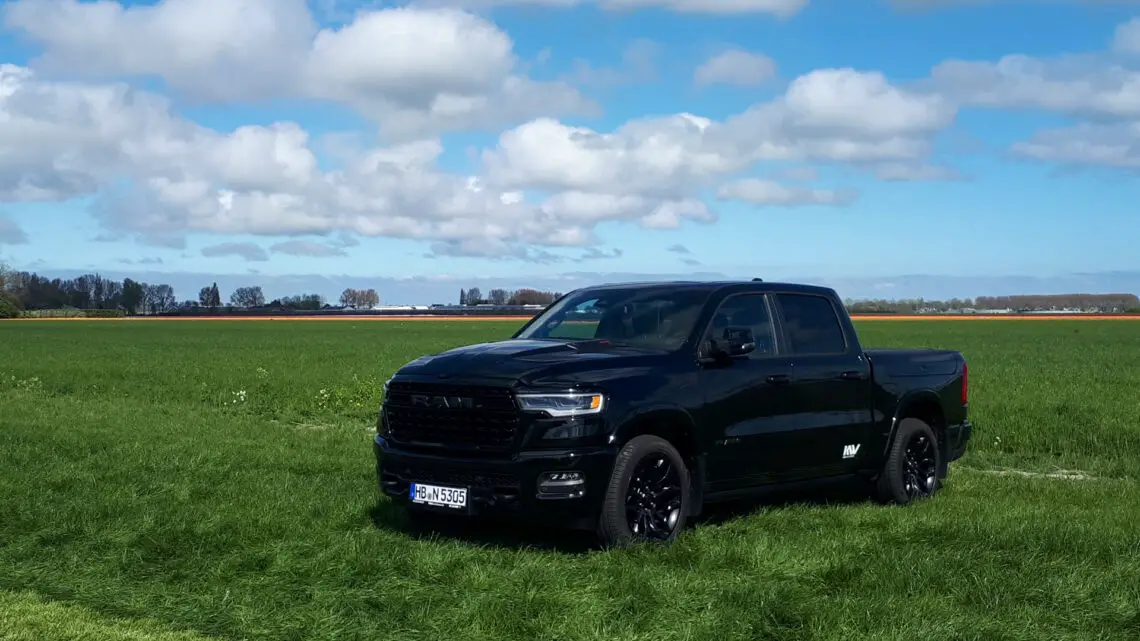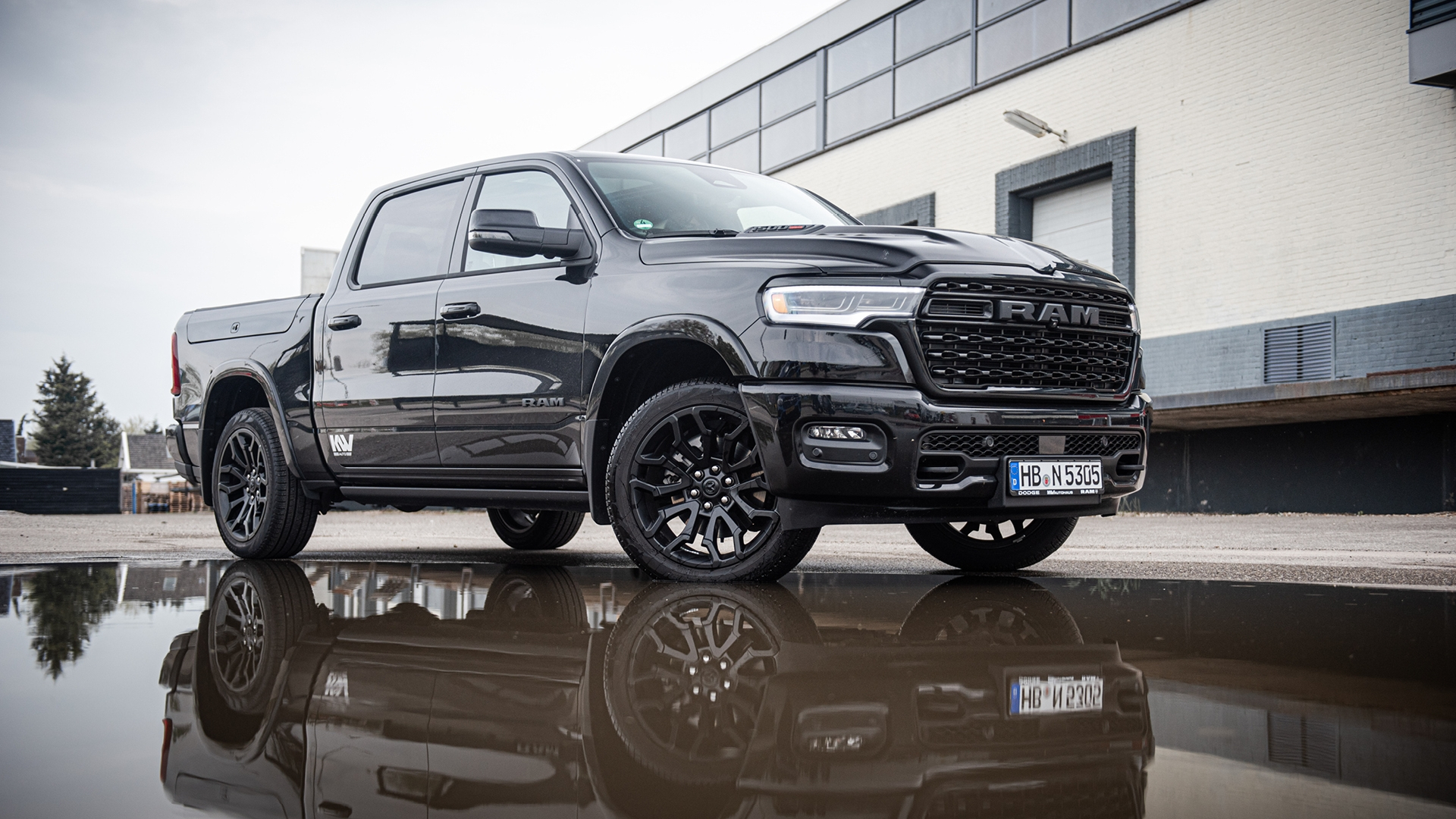Review – A week’s life with an Aries 1500 (2025)
What do you actually get out of such a pickup?
We find that the pickup phenomenon is far from being understood by everyone. This is despite the fact that it is one of the most popular types of commercial vehicles worldwide. Mainly because of its versatility. Certainly a modern pickup combines the capabilities of a commercial vehicle with the comfort of a passenger car. Instead of having a company car for work and a passenger car for out there, you only need one vehicle. Thus, a pickup is even space-saving, rather than a “way too big body.
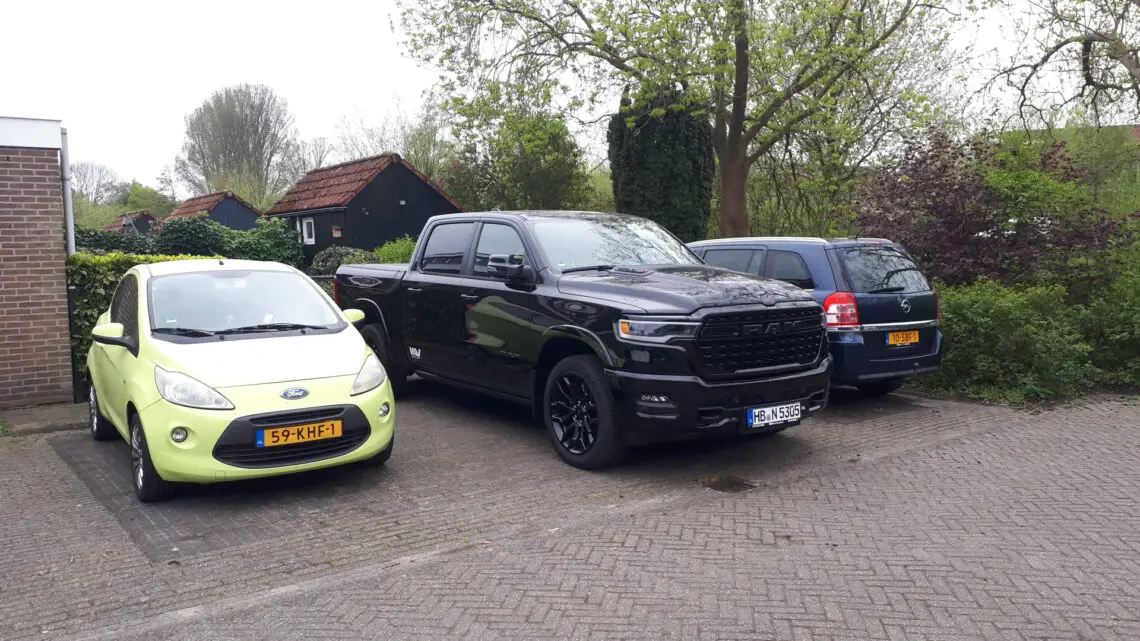
Can you park a little normally with it then?
Admittedly, with a full-size pickup like the Ram 1500, parking can be a challenge. Our test Ram 1500 is 5.9 feet long, about two feet wide and just under two feet high. Parking garages can therefore be just too low (the most common is a clearance of two meters, so that’s just about up to it) and with the length you also have to take into account. The width is not too bad. Nowadays there are plenty of ordinary mid-size cars that are also (almost) two meters tall.
Still, we did not experience any parking problems during the test week. Because of its length, you sometimes have to cross one or two extra times and once in a while the first best spot was not immediately suitable. But not once did we really have to search for a spot at our destination. Moreover, thanks to the parking sensors and a multitude of cameras, you can see exactly how much space you have around you and whether there is anything right next to the pickup.
By the way, our Ram 1500 is the largest type of pickup truck still “common” in Europe. Models like the Ford Ranger are a lot more manageable.
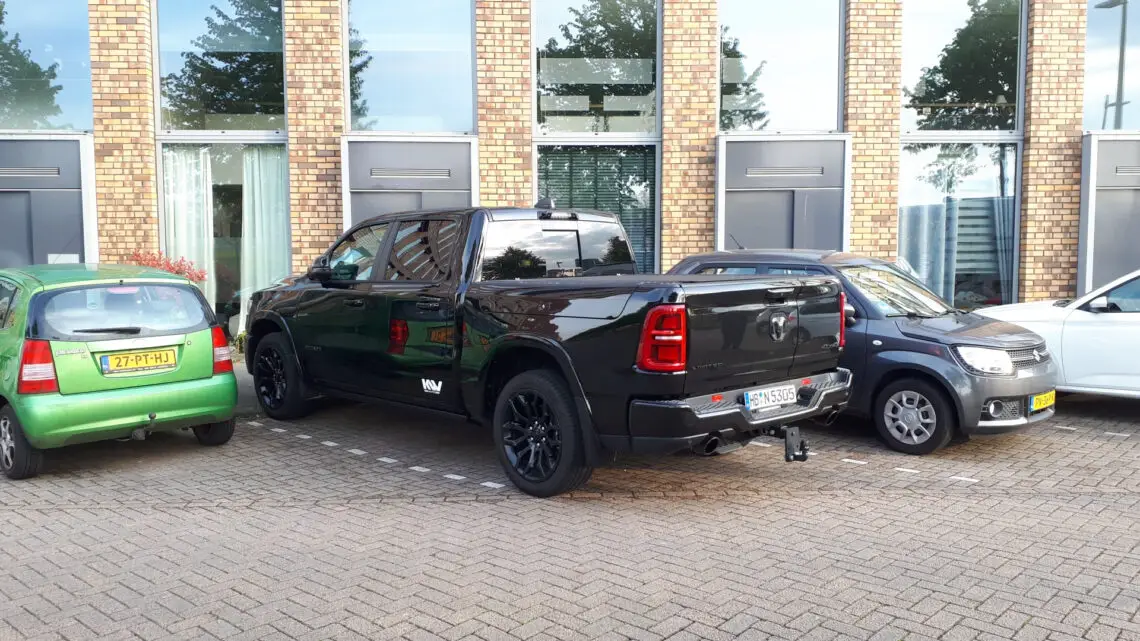
What does a pickup like this actually cost, especially now that you pay bpm?
First, of course, the type of pickup determines the price. As with other types of vehicles, there are cheap and expensive models. Let’s keep the popular Ram 1500 as an example. We will further assume the double cab and short cargo box, or the most popular configuration in terms of body. Furthermore, a somewhat more luxurious version, such as the Laramie, is often chosen.
You can find an approximately ten-year-old example in the Netherlands from just under 30,000 euros. These are already fairly luxurious versions such as the Laramie, because the real basic versions are rare in Europe. If the pickup is twenty years old or more, you can find a decent example for as little as 5,000 euros. Of course, a brand new one is a lot more expensive. Especially now that you also have to pay bpm for commercial vehicles.
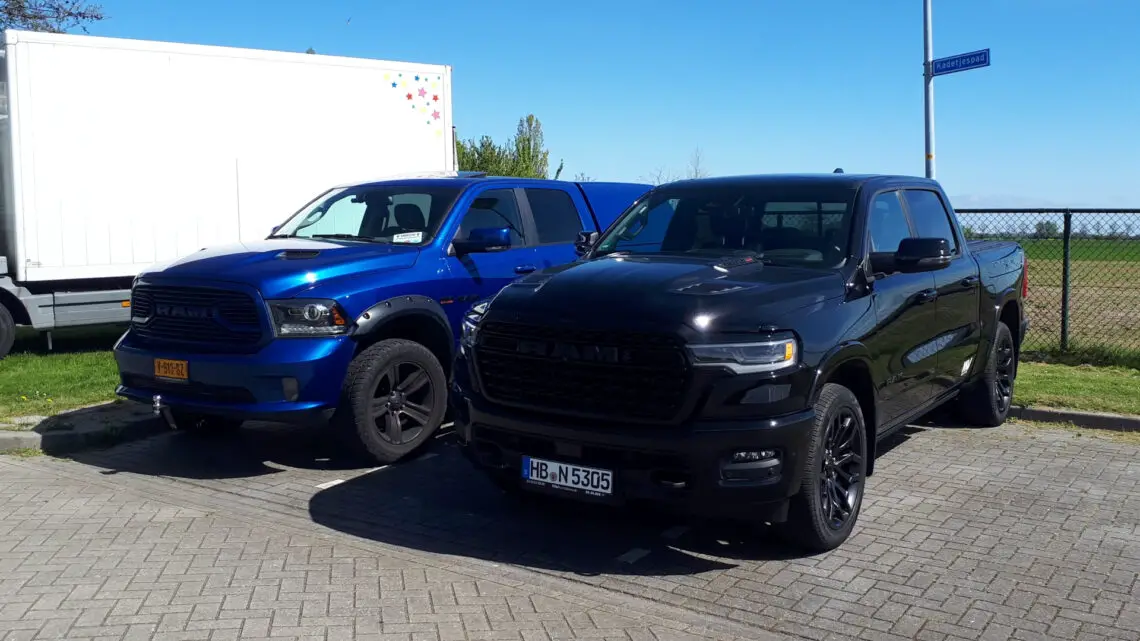
Because these are gray imports, the price is often on request. Thanks to importer KW Automotive, however, we can give a fairly accurate indication. Last year, a 1500 Laramie could still be ordered from around 65,000 euros. With the expiration of the bpm exemption, the same pickup will cost around 93,000 euros in 2025. This is based on the gray license plate, because if you register it as a normal passenger car, the bpm is even more unfavorable. In that case slightly different rates apply. Fortunately, several importers still have a stock of bpm-free cars that were already registered at the end of last year. So strike quickly if you are interested.
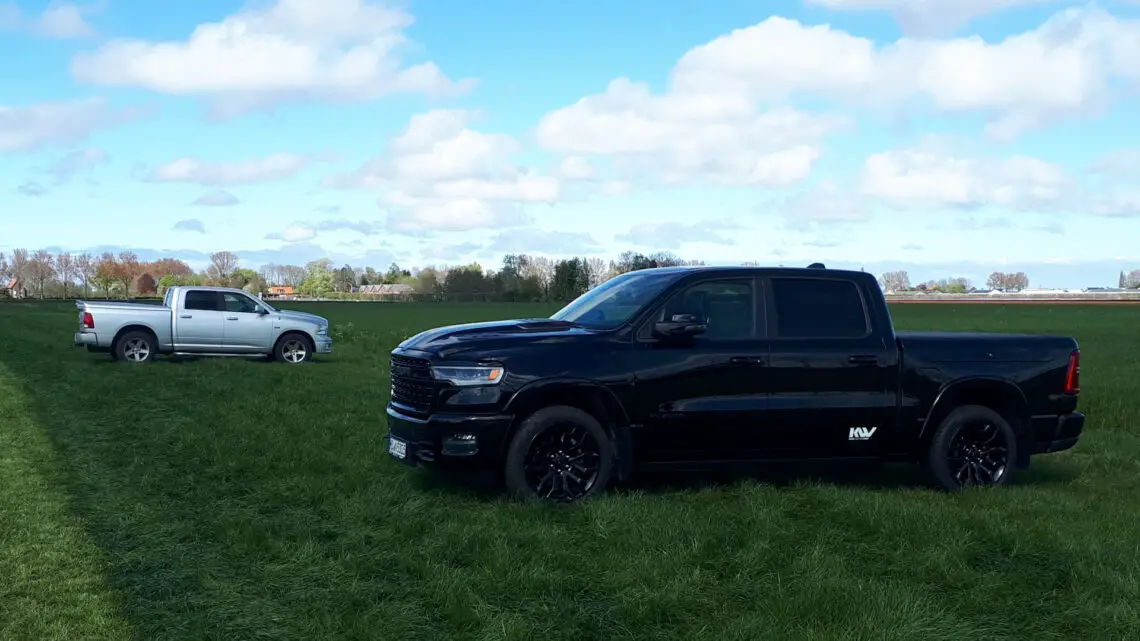
How much do you pay in road tax?
Of course, that too depends on the specific pickup, but let’s take our Ram 1500 as an example. Our test specimen – a luxury 1500 Limited Night Edition – has a registration weight of 2,435 kg, making it one of the heavier types in this segment. Assuming the gray license plate, that amounts to a road tax of 214 euros per quarter. Average, because the exact amount varies slightly by province. For comparison: for an average van, we assume a registration weight of around 2,000 kg and then you’re looking at about 180 euros per quarter.
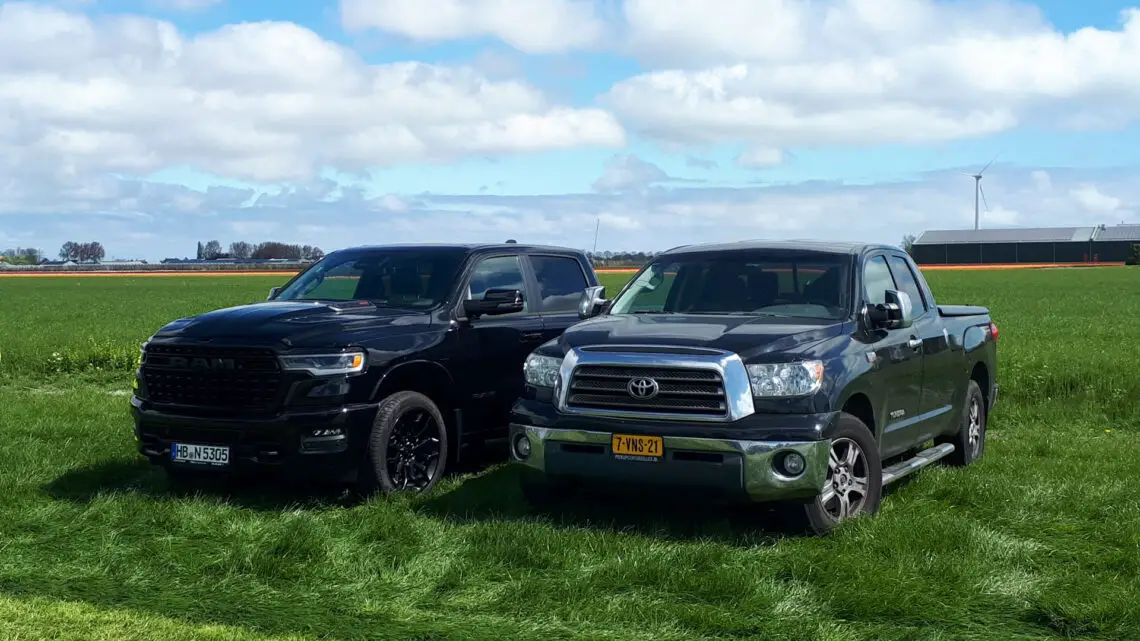
A pickup like that must consume a lot, right?
Of course, this again varies by pickup model, but really economical they are not no. At the end of our test week (with a variation of highways, N-roads and also some city mileage) the on-board computer indicated an average practical consumption of 12.2 l/100 km (1 on 8.2). To put that into context: a van of the same size will also easily run at 1:10.
Thanks to the large fuel tank, by the way, you soon forget about consumption – as long as you’re not filling it up. According to the on-board computer, a full tank will take us 970 kilometers. Based on our practical and theoretical consumption, this is a realistic estimate. Moreover, our test specimen still has its standard gasoline engine. If you have LPG installed, that already makes a big difference in fuel costs.
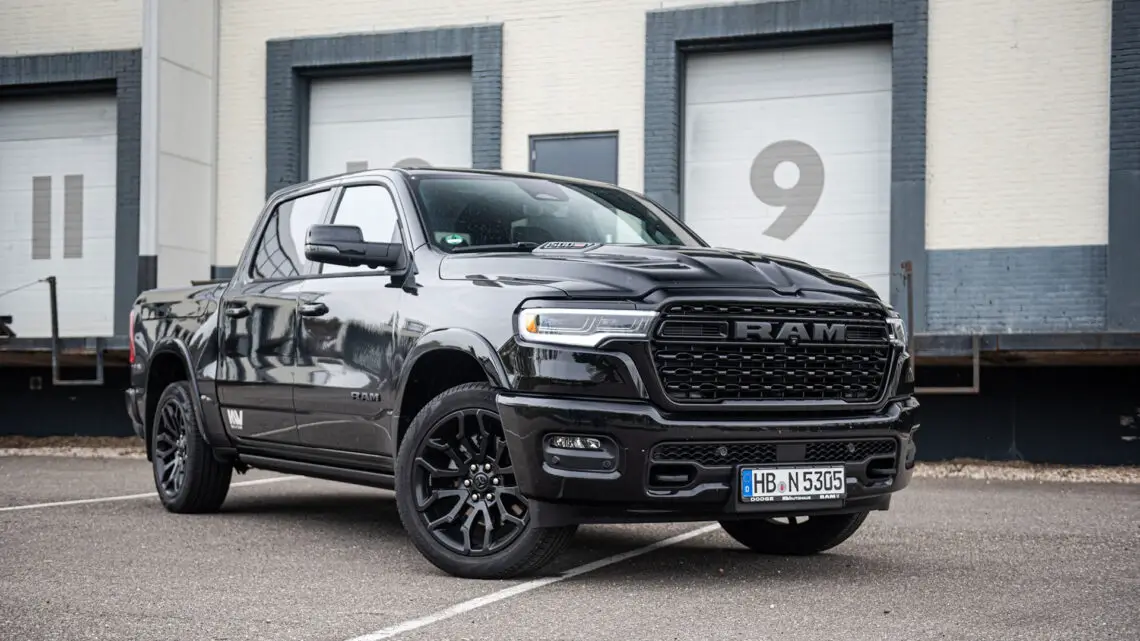
Can you enter environmental zones with it?
First of all, regular environmental zones in the Netherlands only apply to diesel vehicles. These types of pickups almost always run on gasoline and/or LPG and are therefore allowed in. If they do have a diesel engine, the same access rules apply as for all other diesel vehicles. In addition to environmental zones, there are also zero-emission zones specifically for commercial vehicles. You may have to take that into account.
Whether you can enter a zero-emission zone depends on how you use the pickup. The actual use of the pickup is leading, not its registration with the RDW. In other words: if you drive the pick-up with a grey license plate and use it as a company vehicle, you are not allowed to enter a zero-emission zone, just like any other company vehicle with a fuel engine (by the way, there are also fully electric pick-ups). However, if you drive the pickup as a private car, then you have nothing to do with zero-emission zones, just like any other passenger car.
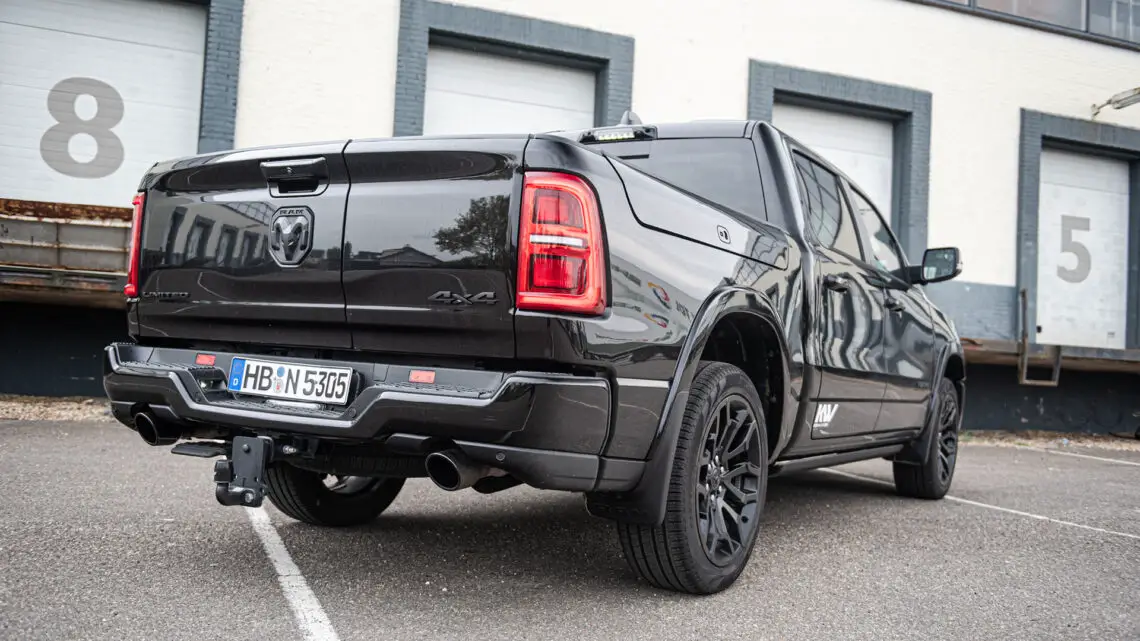
That’s how practical a Ram 1500 is
Returning to the beginning of this story, a modern pickup really does offer the best of both worlds. Let’s start with the commercial vehicle part, using our Ram 1500 as an example. The payload for this version is a hefty 900 kilograms and you can haul as much as 3,500 kg. Actually, even 5,200 kg, but that 3,500 kg is a European legal limit.
Thanks to the open cargo box, it hardly matters how big your cargo is. It can stick out a bit at the back or the top, whereas with a van you sometimes have to struggle with the loading opening or height of the cargo space. Then our example pickup only has the “standard” cargo box. Extended variants are also available (whether or not in exchange for a shorter cab). Our test car has – optional – storage bins in the rear fenders. Good for 68 kg of luggage per bin and waterproof, so easy to rinse clean. A capacity measure in liters is not given, but in the back of an A-segment hatchback you can sometimes put less. Inside the cargo box is another movable partition, which you can also take out and use as a work table.
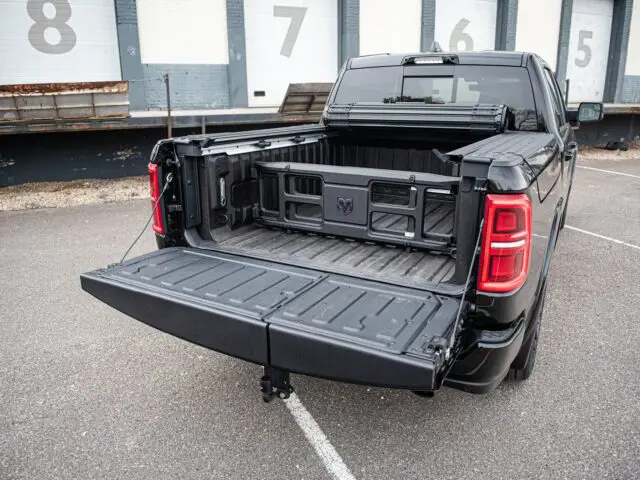
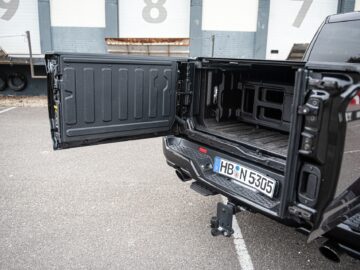
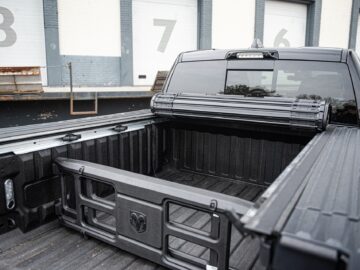
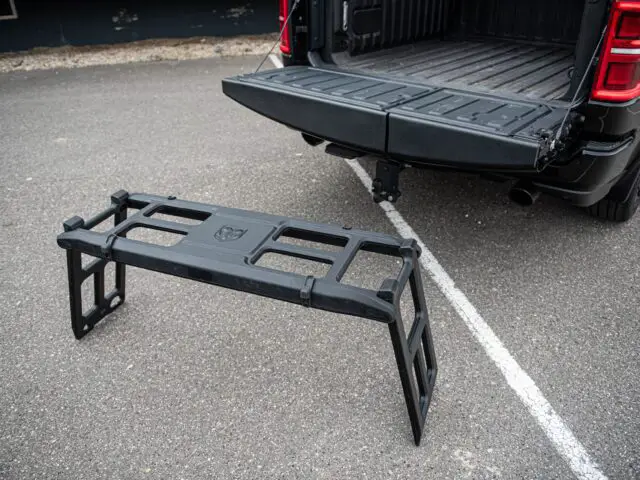
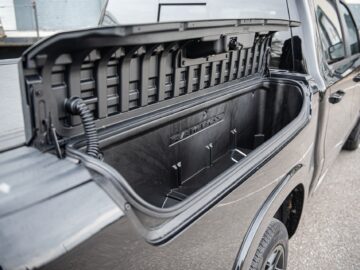
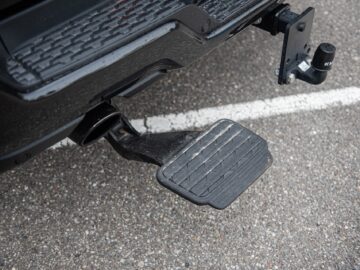
Pickups are often full of clever storage options on the inside, too. Just a few examples from our Ram: the rear seats fold up easily to create an extra cargo space. With the bench in position, there is another storage space under the seat, which is also adjustable in size. There are also storage compartments in the cabin floor – removable for easy cleaning. Center console and dashboard also offer numerous storage options. In this respect, the interior is as practical as an MPV – or even more practical thanks to the square body shape. Even with five adult occupants, everyone has plenty of room.
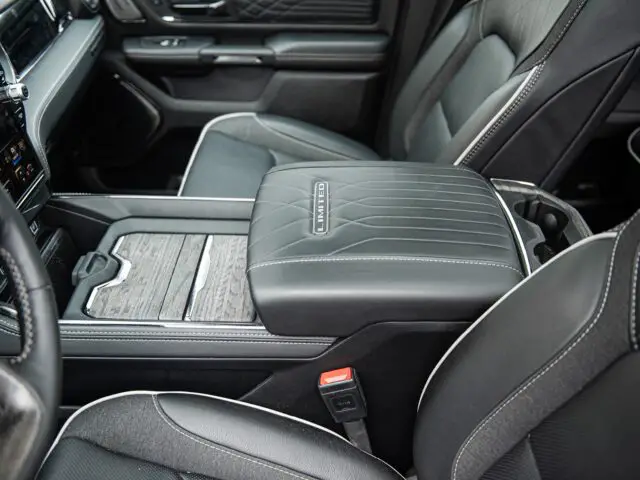
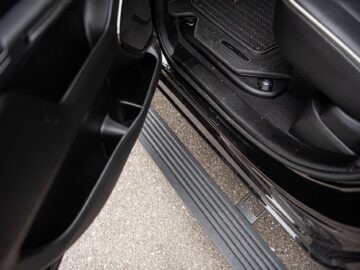
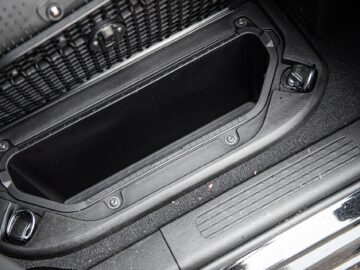
This is how luxurious a pickup is
The luxury on board depends entirely on the version you buy. You can make it as luxurious as you want. From fairly bare versions comparable to a simple van to models that are not inferior to a luxury SUV. Our test car belongs to the latter category. From lovely massage seats to a private infotainment screen for the front passenger, you lack nothing. The finish and materials are also perfect.
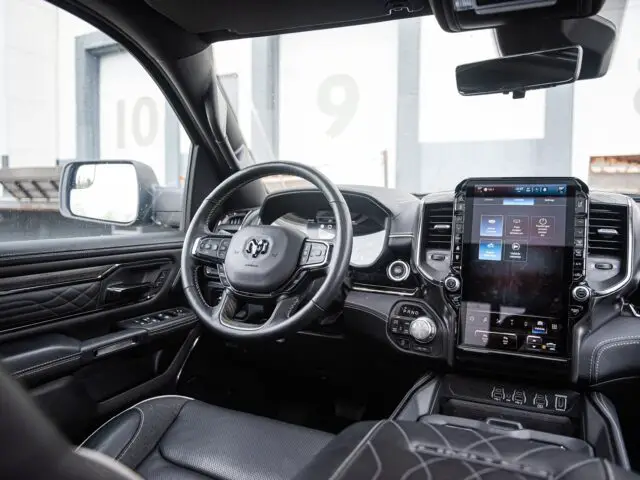
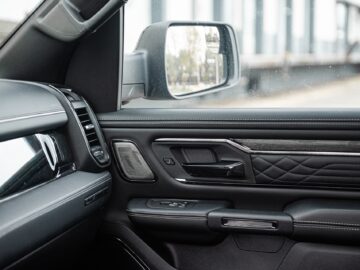
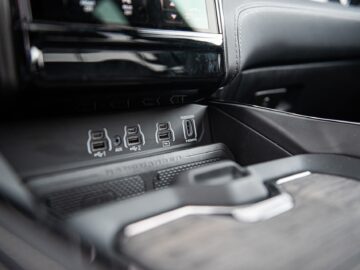
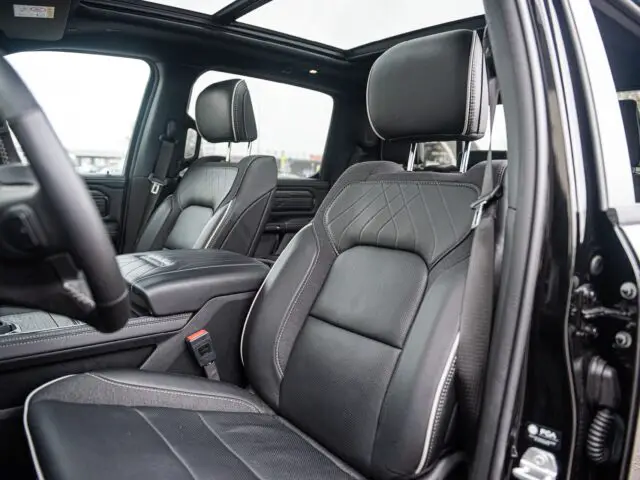
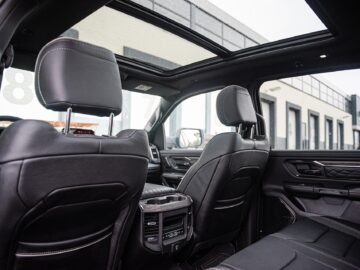
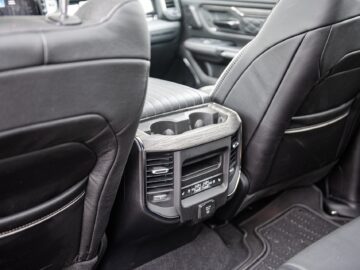
How does such a Ram 1500 drive?
Surprisingly good. Yes, you notice that you are traveling with a large vehicle, but even in terms of ride comfort and handling, it is not inferior to a regular SUV. Especially once you get used to its dimensions, the Ram drives remarkably tight and agile through traffic. You can read more about the driving characteristics of the Ram 1500 specifically in this earlier review.
Thanks to the (very) high seating position, you also have an excellent overview of the road. Visibility all around is also surprisingly good, thanks precisely to the square bodywork with fairly large windows. Okay, things really right next to you, such as sidewalks, take some attention. On the other hand: you quickly learn to position the pickup correctly, and in modern cars sensors and cameras are watching you.

Besides: when turning right, we can see the bicycle path along the road much better than in the average modern middle-class car with its thick window frames. In a van, you can barely see what’s going on around you, and you don’t hear a word about it. Anyone who still says that this type of pickup is too out of sight for the city has clearly not driven one themselves.
Conclusion after a week of Ram 1500 driving in the Netherlands
That will be a week of nowhere to park and daily refueling, we thought in advance. Fortunately, that turned out to be not so bad. Parking and maneuvering in tight spots is surprisingly easy to do, and on LPG the fuel costs are also manageable. Moreover, there are also electrified models nowadays. Add to this the excellent view of traffic, the wonderfully comfortable interior and the impressive looks – we now know why these pickups are so popular.
